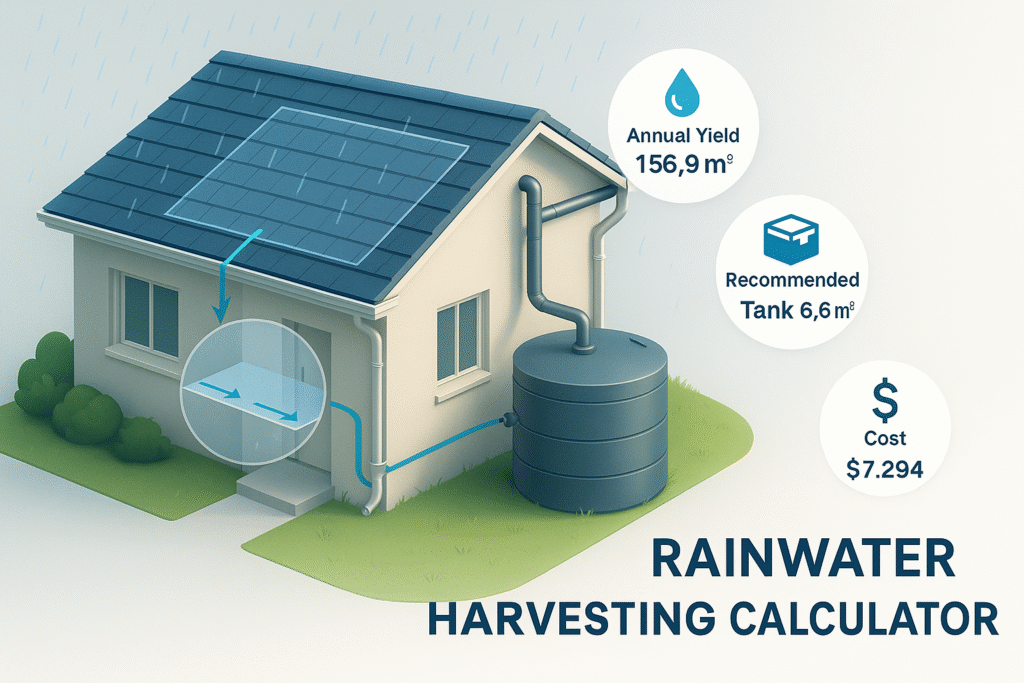Rainwater Harvesting Calculator estimates annual yield, tank size (BS 8515 or days-of-storage), and India/US/UK costs with live SI/Imperial units.


Rainwater Harvesting Calculator estimates annual yield, tank size (BS 8515 or days-of-storage), and India/US/UK costs with live SI/Imperial units.